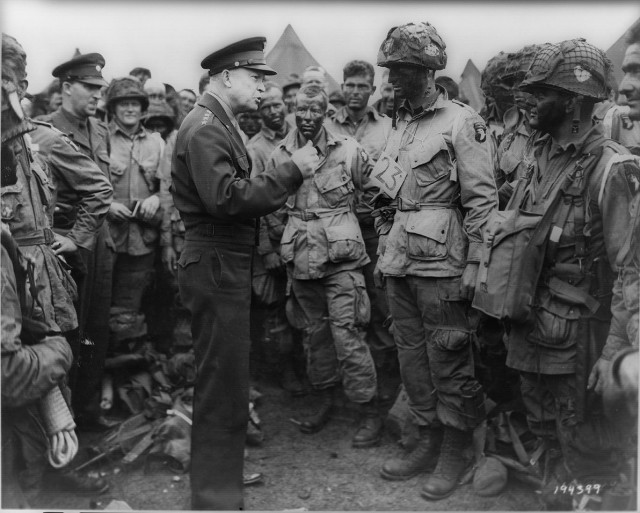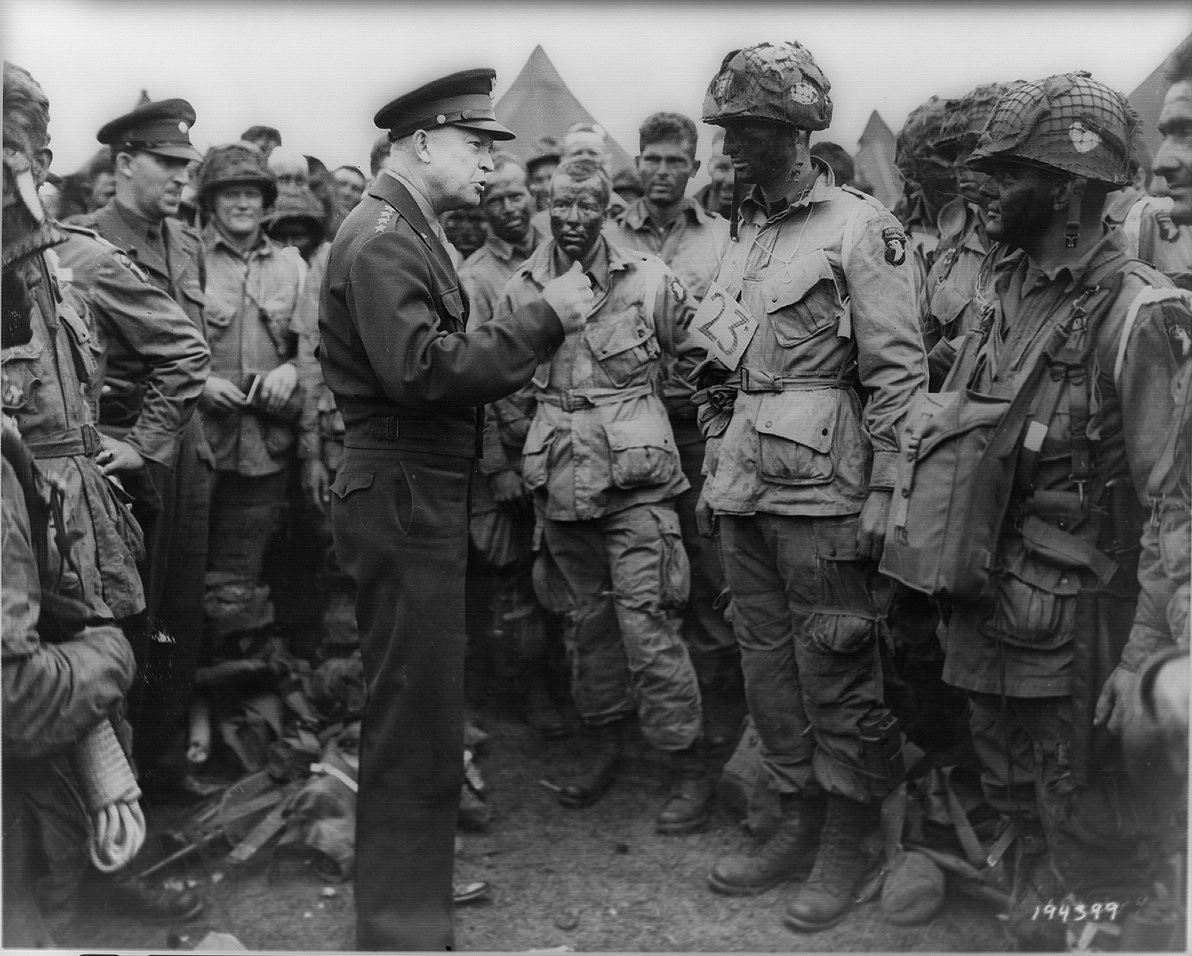
FORT BRAGG. N.C. - Edwin S. Persons, a former paratrooper with the 101st Airborne Division, isn't able to boast about the hundreds of jumps that many of today's paratroopers have. He doesn't have to. His two combat jumps speak for themselves - Normandy, France on D-Day and Holland during Operation Market Garden.
Persons visited Fort Bragg in February to meet with today's paratroopers and learn about how airborne operations compare with those of years past. His first stop was Fort Bragg's Advanced Airborne School. There he traded stories with the school's command team, Maj. Gregory Sakimura and 1st Sgt. John Coomer, and looked at today's parachute rigging.
As Sakimura described the changes, he told Persons that while the container was different, the parachute inside was virtually unchanged from the one he jumped with in World War II.
Persons told them about what it was like jumping from gliders instead of planes and reminded them that he jumped from only 400 to 600 feet from the ground instead of the 1,200 feet that today's paratroopers exit the aircraft from.
"I'm just thankful I had a static-line," said Persons. "If I didn't, I think I'd still be falling. I don't even remember my first jump - I think I fainted."
Persons joined the Army straight out of high school and was immediately shipped overseas. He spent two years of his two and half year career in the European theater during World War II. He was a combat medic and said that sadly he saw many casualties during his time in service.
One of the memories he shared with Sakimura and Coomer was of meeting Gen. George S. Patton while helping a wounded buddy to the first aid station in Bastogne.
"I was taking a buddy to the aid station when I heard a jeep coming up behind me. I looked back and there was General Patton, wearing his leather jacket with his pearl-handled pistols. He came up and helped me carry my buddy into the aid station," recalled Persons.
After lunch at the 82nd Airborne Division Special Troops Battalion Dining Facility, Persons visited the 82nd Abn. Div. museum and was able to see uniforms, parachutes and weapons similar to the ones he used or saw during World War II. From there, it was off to the 11th Quartermaster Sustainment Brigade pack shed to watch the riggers pack parachutes. Persons told the riggers about packing his own chute and about how he ended up deciding to go airborne.
"I joined the 101st over in England, I was brought in as a replacement. I was sitting with my buddies in a bar and a guy walks in and asked if anybody wanted out of here. Well, we all stood up," said Persons. "He told us told us the only way out was to go airborne. Most of the guys quickly sat down again, but I guess a few of us were drunk enough and stayed standing."
Instead of being shipped stateside for airborne training, he attended the course in England.
Persons, now 86, said that paratroopers are a special breed and that is takes a special kind of courage to jump out of an aircraft.
He told stories about a parachute catching on fire on D-Day and having to watch the scene, unable to assist his fellow paratrooper. He remembered watching paratroopers being shot before they even reached the ground and how they lost 40 percent of their division that day.
Persons recently visited Normandy and said that seeing the 9,800 crosses memorializing the Soldiers lost there was heart-wrenching.
As the Soldiers listened to his tales, Chief Warrant Officer 2 Brian Perinon, an airdrop systems technician with the 11th QM Sustainment Bde. who has been a paratrooper for his entire 12-year career just shook his head and said, "My paratrooper life hasn't even begun yet."
While the former private first class resolutely refused to trade his "Screaming Eagle" hat for one with the double A's of the 82nd Airborne Division, Persons said he was happy to have the opportunity to visit with today's paratroopers and walk around Fort Bragg.

Social Sharing